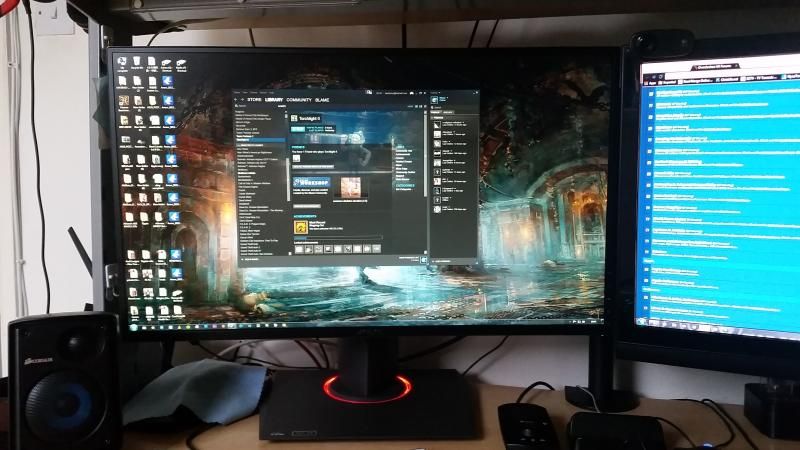Philips 272G5DYEB 27-Inch G-SYNC Monitor Arriving This Month
MMD, the leading technology company and brand license partner for Philips Monitors, announces a superb new monitor for true gaming fans: the 27-inch Philips 272G5DYEB display with NVIDIA G-SYNC. With a refresh rate of 144 Hz, this display updates the screen content nearly two and a half times more often than a standard monitor. By letting the GPU control the refresh, it delivers ultra-smooth image motion that includes the critical images that are otherwise missing on displays with standard refresh rates. So players can target objects more accurately - and level up their game.
NVIDIA G-SYNC - groundbreaking display technology
One drawback of gaming with a standard monitor, at least for serious gamers, is the lower refresh rate, which can make objects appear to jump suddenly from one spot to another on the display. The NVIDIA G-SYNC chipset is designed for gamers who are looking for a display that can game just as hard and fast as they can. The Philips 272G5DYEB NVIDIA G-SYNC monitor, with its advanced graphics support, is more than a match for the sharp, fast responses of experienced gamers. It redraws the screen image up to 144 times per second, making objects less likely to jump around and easier to target accurately.
The revolutionary performance of G-SYNC is achieved by synchronizing the display refresh rates to the Graphics Processing Unit (GPU) of the computer's graphics card, essentially giving the GPU control over the timing of display updates. The monitor refresh rate constantly adapts to the frame rate which is communicated by the GPU. This eliminates the screen tearing and stuttering that detract from a truly immersive gaming experience. It also significantly reduces input lag. As a result, scenes appear instantly, objects are rendered with dazzling sharpness and clarity, and gameplay becomes super smooth throughout. In short, it gives serious gamers a seriously competitive edge.
With a spacious 27-inch screen, a response time of 1 ms GTG and Full HD support, gamers can also expect dazzling viewing from the new display, with sharp, brilliant colours and superior image reproduction.
Connectivity with blazing speed
With such a powerful and responsive kit as the Philips 272G5DYEB display with NVIDIA G-SYNC, the connection between PC and display has to measure up. The new gaming display ensures that the PC connection will never be a performance choke point. With excellent performance and zero latency, DisplayPort technology offers gamers the high-speed imaging and refresh rates to match the singular performance of the G-SYNC display. It delivers better performance than the DVI standard, supporting cables of up to 15 meters in length and data transfer rates of 21.6 Gbps. The USB 3.0 ports ensure users benefit from fast USB transfer - around 10 times speedier than the USB 2.0 standard. These connectivity choices make the new Philips display a superb choice not only for gaming and movies, but also for general office and home use.
The new Philips 272G5DYEB display with NVIDIA G-SYNC will be available end of October 2014 at a suggested retail price of $699/€699/£499.







